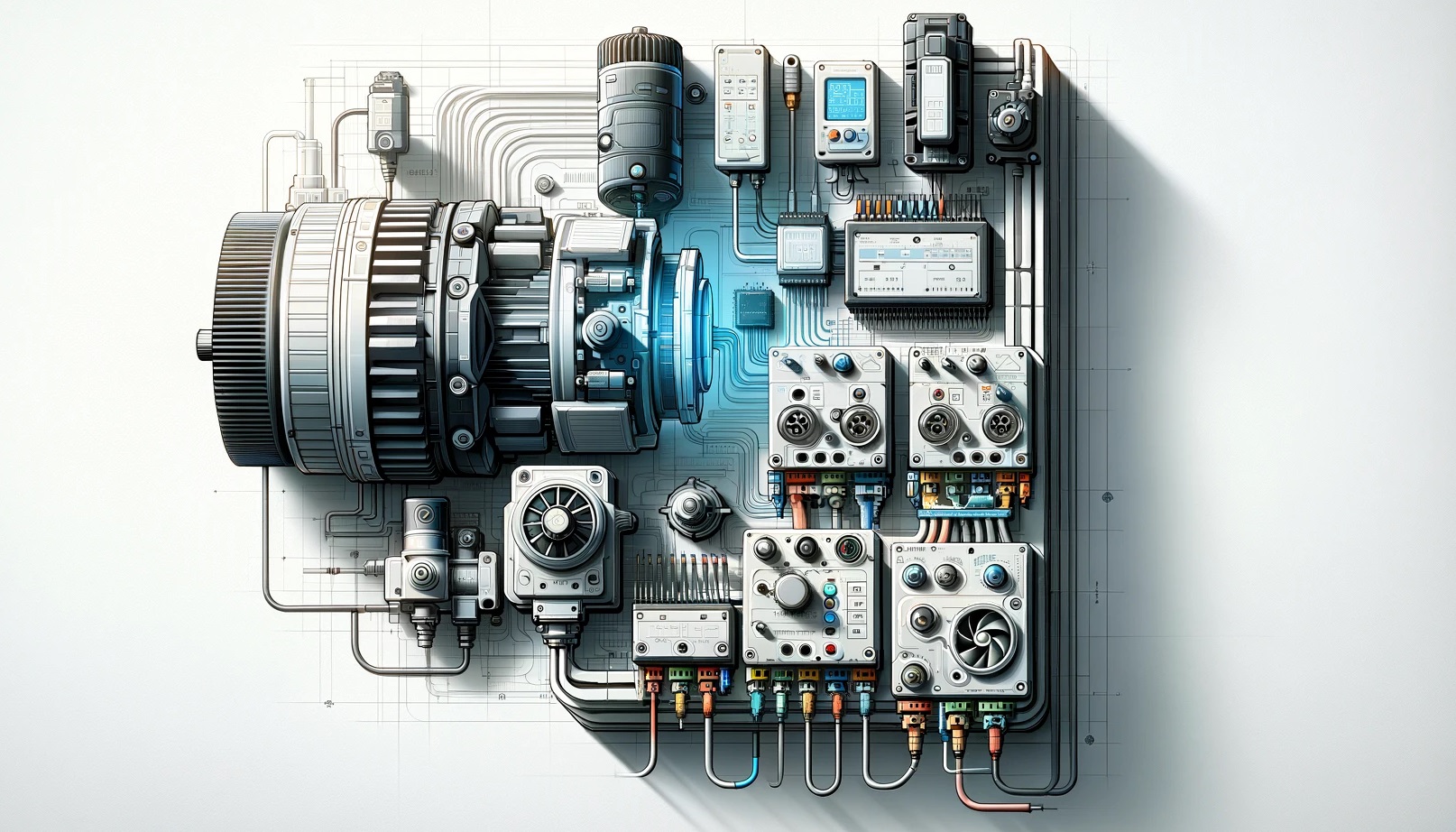What is Dc drive?

A DC drive is an electrical device used to control the speed, direction, and torque of a DC (Direct Current) motor. In its simplest form, a DC drive can be a manual controller like a variable resistor, but in modern applications, it's more likely to be a sophisticated electronic piece of hardware that uses microcontrollers or digital signal processors to manage the performance of the motor.
Types of DC Drives
Mechanical DC Drives: These are the earliest forms of DC drives that use mechanical components like gears and belts to control motor speed. They are generally considered obsolete today.
Analog Electronic DC Drives: These use analog electronics like transistors and diodes to manipulate the voltage and current supplied to the motor, thus controlling its speed and direction.
Digital DC Drives: These are the most advanced type and use digital signal processors (DSPs) or microcontrollers to monitor and control the motor's performance. They can offer precise control, energy efficiency, and programmability.
Applications
DC drives are used in a wide range of applications including:
Conveyor belts
Elevators and escalators
Extruders
Electric cars
Pumps and fans
Advantages
Precise Control: DC drives provide better speed and torque control compared to AC drives.
Energy Efficiency: They allow for more efficient use of electricity, especially in applications requiring variable speed.
Simplicity: DC motors and drives are generally simpler and less expensive than their AC counterparts for low-power applications.
Disadvantages
Maintenance: DC motors often require more frequent maintenance, such as brush and commutator replacement.
Cost: While the drive itself may be less expensive, the overall system may have higher costs due to maintenance.
In many applications, AC drives are replacing DC drives due to advances in technology that allow AC systems to achieve similar levels of control and efficiency. However, DC drives are still commonly used in specific industries and applications where their unique advantages make them a better choice.
While the use of DC drives in industry (at least at high power levels) has diminished, they are still widely found. Below, we have attempted to answer the most frequently asked questions about DC drives from our visitors.
- What are the operating principles of DC drives?
- What are the different types of DC drives?
- What are the key differences between DC drives and AC drives?
- What are the typical applications for DC drives?
- How energy-efficient are DC drives?
- What are the control methods used in DC drives?
- What type of DC drive is most suitable for a specific DC motor?
- What are the most common problems and solutions associated with DC drives?
- What are the power ranges used in DC drives?
- What additional components are used alongside DC drives?
- What are the advantages and disadvantages of DC drives?
- How do I choose a DC drive?
- How scalable are DC drives?
- Is integration between a DC drive and a PLC possible?
- What are the lifespan and maintenance requirements for DC drives?
- What safety features are included in DC drives?
- How is the dynamic response in DC drives?
- What feedback options are available in DC drives?
- What types of protection mechanisms are used in DC drives?
- What types of sensors can be used with DC drives?
++ DC Drives Home Page
These questions generally also encompass the types of queries that many people may have about DC drives. Each user or student will have their own unique question or interpretation depending on the specific situation or application. The answers provided are not binding and are not definitive. "You are welcome to share the article above as long as you cite it as the source." 05.2019 -
